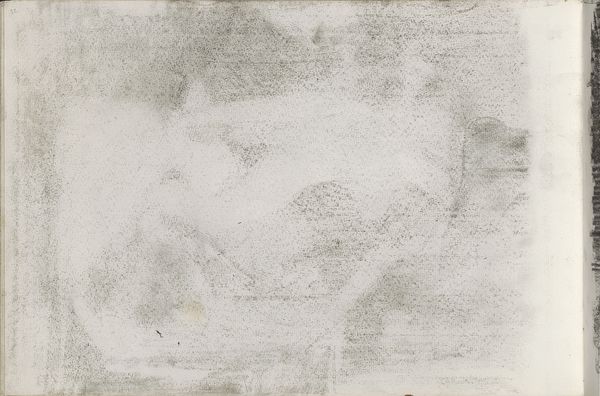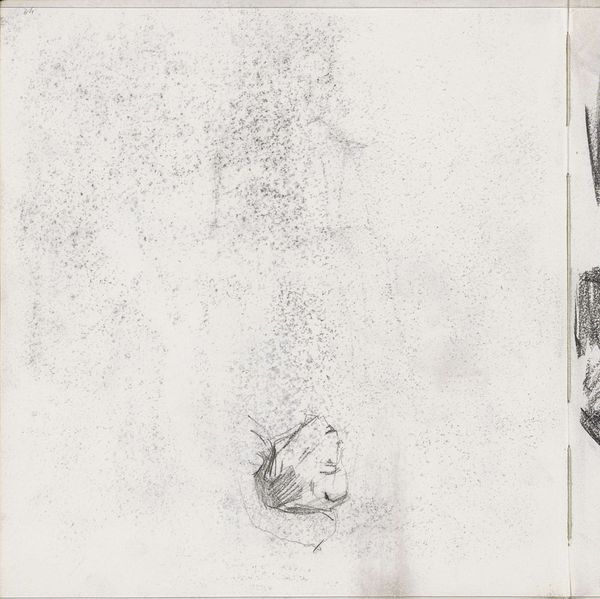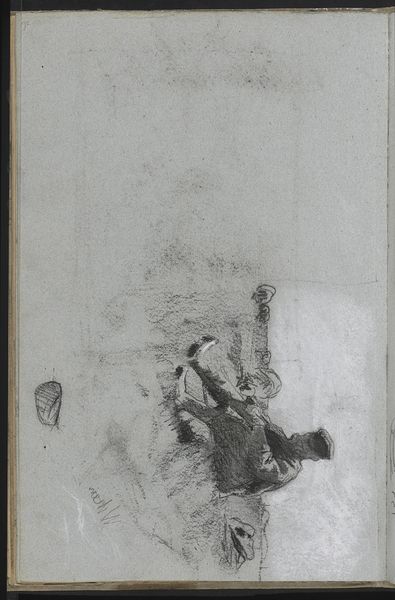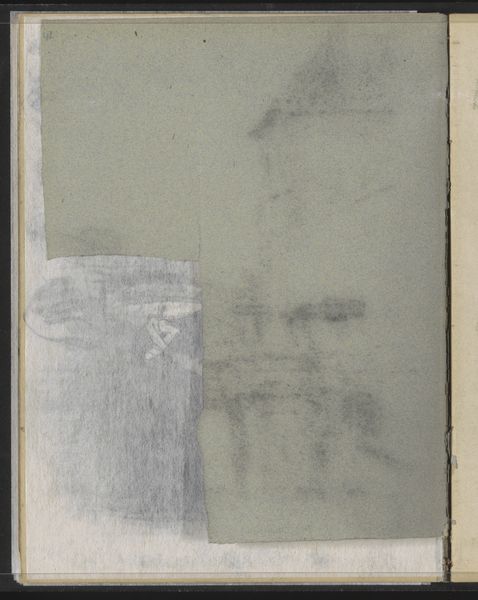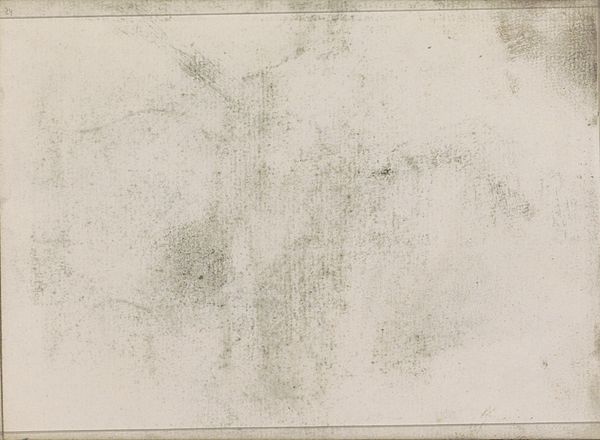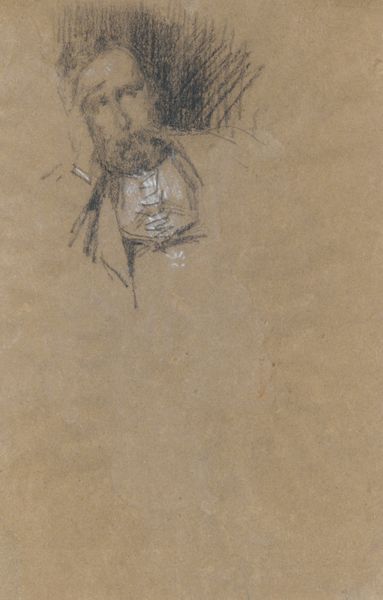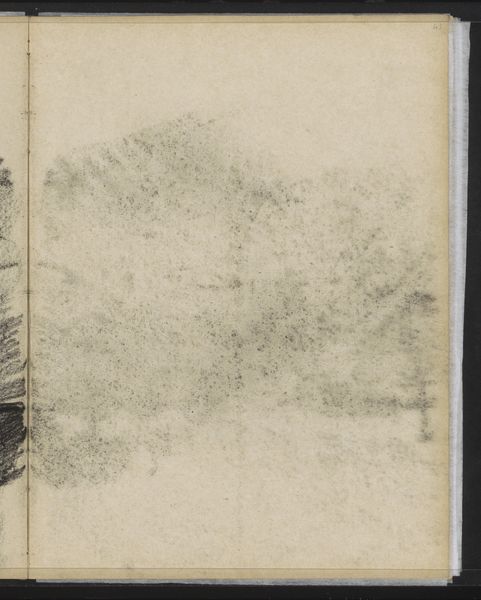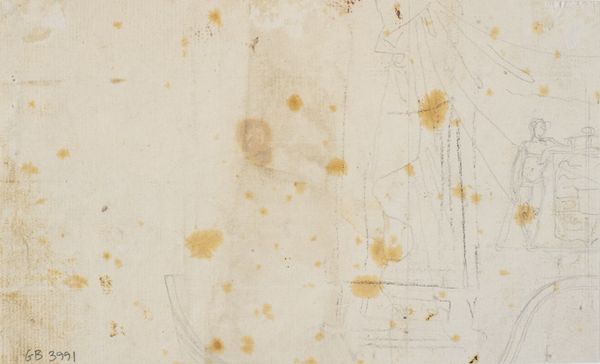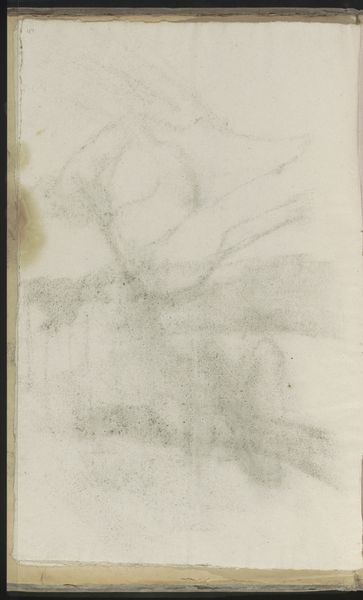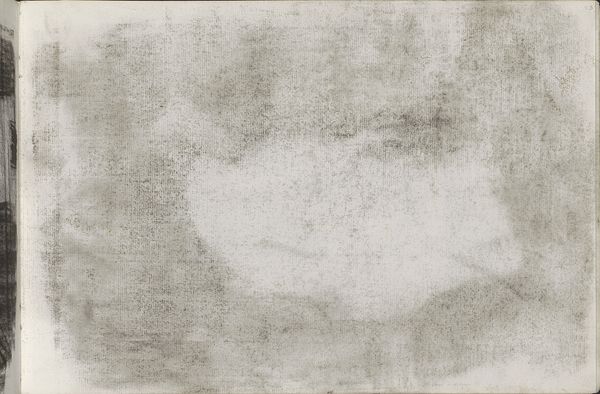
drawing, paper, watercolor, ink
#
drawing
#
neoclacissism
#
water colours
#
landscape
#
charcoal drawing
#
paper
#
watercolor
#
ink
#
watercolor
Dimensions: 195 mm (height) x 156 mm (width) (bladmaal)
Curator: We're looking at Nicolai Abildgaard's "Løse figurrids i blyant og sepia," a drawing from between 1786 and 1789, currently held here at the SMK. It employs pencil and sepia ink, primarily. Editor: My immediate impression is of a faded memory, like something partially obscured by time or intentionally concealed. The brown sepia wash gives it an aged, almost ghostly feel. Curator: Indeed. The sepia ink, favored during the Neoclassical period, often symbolized a connection to classical antiquity, imitating the look of aged documents and prints from the era of the Roman Empire. Editor: That Neoclassical connection is interesting, considering the socio-political context of that time. This work exists on the eve of monumental changes in Europe, just before the French Revolution and the rise of Napoleon. Does Abildgaard employ antique forms to, perhaps, reflect on ideas of Republicanism? Curator: It's a potent consideration. There is no classical or allegorical motif evident, though the lack of a clear, present subject and stark simplicity suggests Abildgaard favored internal or subjective states of thought. In Neoclassical art, line was the main means of delivering these kinds of heroic or tragic moods. But this, by contrast, feels incomplete or vague. Editor: Right. It feels incomplete to our contemporary eyes, as the drawing suggests something inchoate, in formation or transition. A sketch rather than a full articulation. Perhaps the loose figurrids indicates that this drawing reflects his search for a concrete representation that matched his interior, intellectual pursuits. Curator: The sepia's muted tones do contribute to a sense of ambiguity. Abildgaard also incorporated pencil lines, some quite faint, almost as if deliberately blurring the boundaries between finished work and preparatory sketch. This can symbolize the importance of self-analysis and, to the eye attuned to symbols, even be an appeal for viewers to recognize and develop their own insights. Editor: In that light, then, perhaps that ghostliness could symbolize the fading power structures or nascent philosophical currents percolating through late 18th-century Europe. Curator: It's a wonderful lens through which to understand it! This piece presents not simply the external aesthetics but the interior struggle. Editor: Precisely. Recognizing this kind of contextual framing moves beyond art's capacity as mere visuality and turns it into a living reflection.
Comments
No comments
Be the first to comment and join the conversation on the ultimate creative platform.
